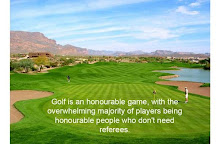Dilbert by Scott Adams devotes a whole section to the identity, purpose and dilemmas of seating in the modern workplace. He links the shape and size of the typical cubicle to 4 previous incarnations (Veal pen, Cardboard box, baby’s playpen and hilariously a prison cell) as he mercilessly lampoons the cube and all its derived forms.
In a previous role I was the PM for a project to design seating for 22,000 engineers in the mid-west of America.
We were shown an existing building that currently housed even more people and had been ‘cleverly’ sub-divided into alpha-numerical addresses. However this was insufficient for the scale and the designers had resorted to a colouring scheme to assist individual location description. So imagine telling your vendor to meet you at ‘ Building ‘A’, Green Zone, Grid G39’. The company was rightly concerned about the effect this was having on the individuals incarcerated in the cubes. If you have ever seen a large factory henhouse then you would understand immediately the issues involved.
Hot-desking or ‘hoteling’ further complicated the arrangement when the HR department sought to reduce costs by reducing workstations. The same logic that allows airlines to overbook seats sold also allowed these departments to trim the desk numbers by 10 to 20%. Dilbert more humorously uses the ‘public restroom’ analogy. This did give rise to savings on the bottom line but increased stress levels as individual workers no longer had a sense of place. No matter how absurd the previous address system was at least the individual had a place to call his/her own and put up photos and memorabilia of an existence outside work. Dilbert carries the theme a bit further to include cubicle furniture, dress code and employee recognition programs (hopefully defunct).
My concern here is that the type of work has changed in the past decade and is more about changing the environment and less and less about operating or maintaining the environment. The attributes and skills required are very different and also the working environment needs to change to enable collaboration and productivity. Flexibility, agility, initiative and learning are some of the new buzz words in the recent management methods, books and magazines. These human traits are possible to achieve by internal sourcing within the company and also by selective lateral hires. However the problem remains with the fixed offices, furniture and cubicles of the previous era. There needs to be a revolution in the design of the workplace to enable the desired attributes and skills to shine and be productive.
The cubicle is dead – but how long before it is gone?
Tuesday, February 02, 2010
Subscribe to:
Post Comments (Atom)


No comments:
Post a Comment